Most good vs. evil stories end one way: good triumphing over evil, usually in the form of a black-robed, weapon-wielding, maniacally cackling antagonist. But what happens when that evil force sidesteps the climactic battle altogether and rewrites the story so he comes out on top? The Plucky Squire explores this metafiction idea, casting you as the heroic Jot, who must go outside himself – and outside his titular book – to discover how to win and restore inspiration to the world; both his and the realm outside his book.
The Plucky Squire begins with Jot running an errand for the local music-mixing wizard, Moonbeard. He explores the land of Mojo a bit – even gets in a fistfight with a honey badger – before the story takes a different turn. The villainous sorcerer Humgrump has discovered a way to rewrite the tome, and magically forces Jot outside the picture book and into the 3D world.
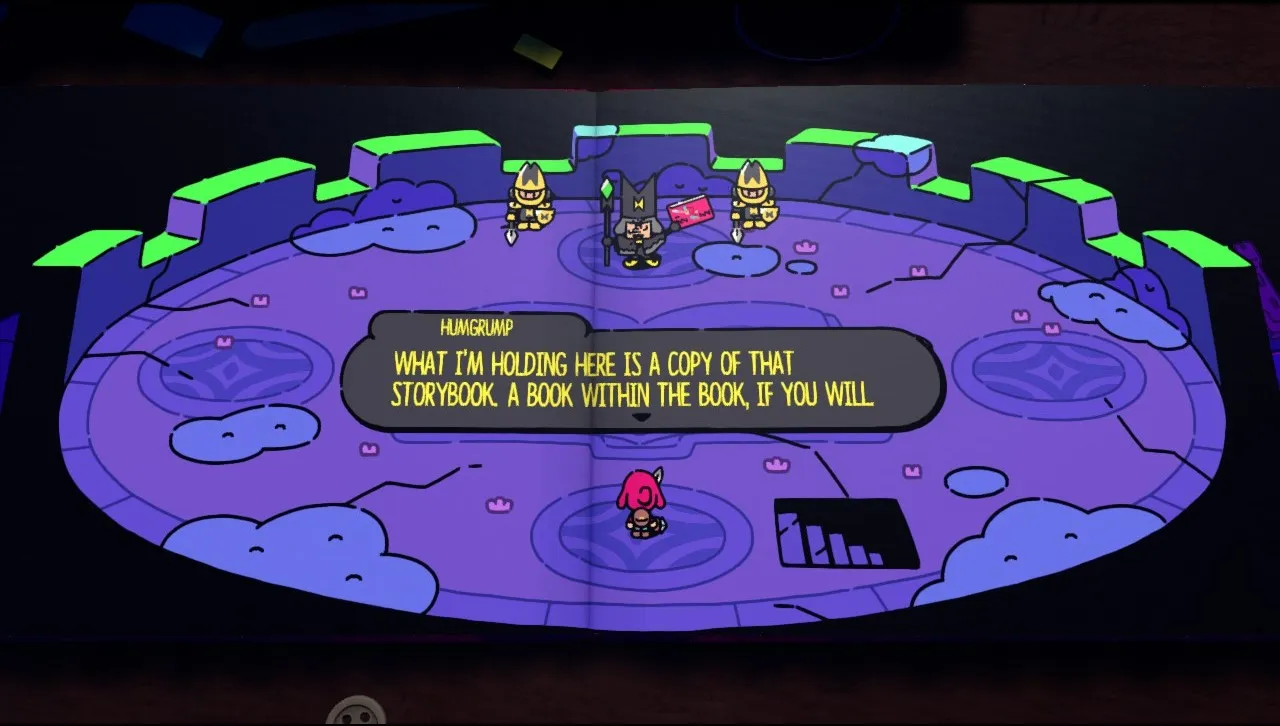
Jot, along with magic-studying Violet and troll Thrash, will traverse the world of Mojo on their quest to defeat Humgrump, writing a new story for the pages of The Plucky Squire (the in-universe book). They grow together on their hero’s journey, overcoming fears and doubts that are right at home inside a children’s fable. While it may not be the most complex or original tale (spoiler alert: good wins in the end), it’s nonetheless enjoyable and well written, with some fun comedy and genuinely great character moments.
Most of The Plucky Squire is told in the 2D storybook world. The art style of the book reminded me of the work of picture book illustrators Jess Hannigan or Rilla Alexander with its pastel colors and marker line work. The world is bright and beautiful, especially in Artia City, which is populated by parodies of famous artists like Frida Kahlo and Jean-Michel Basquiat. Things change, however, towards the end as Humgrump extends his influence, bringing in drab, metallic gray machinery into the book.
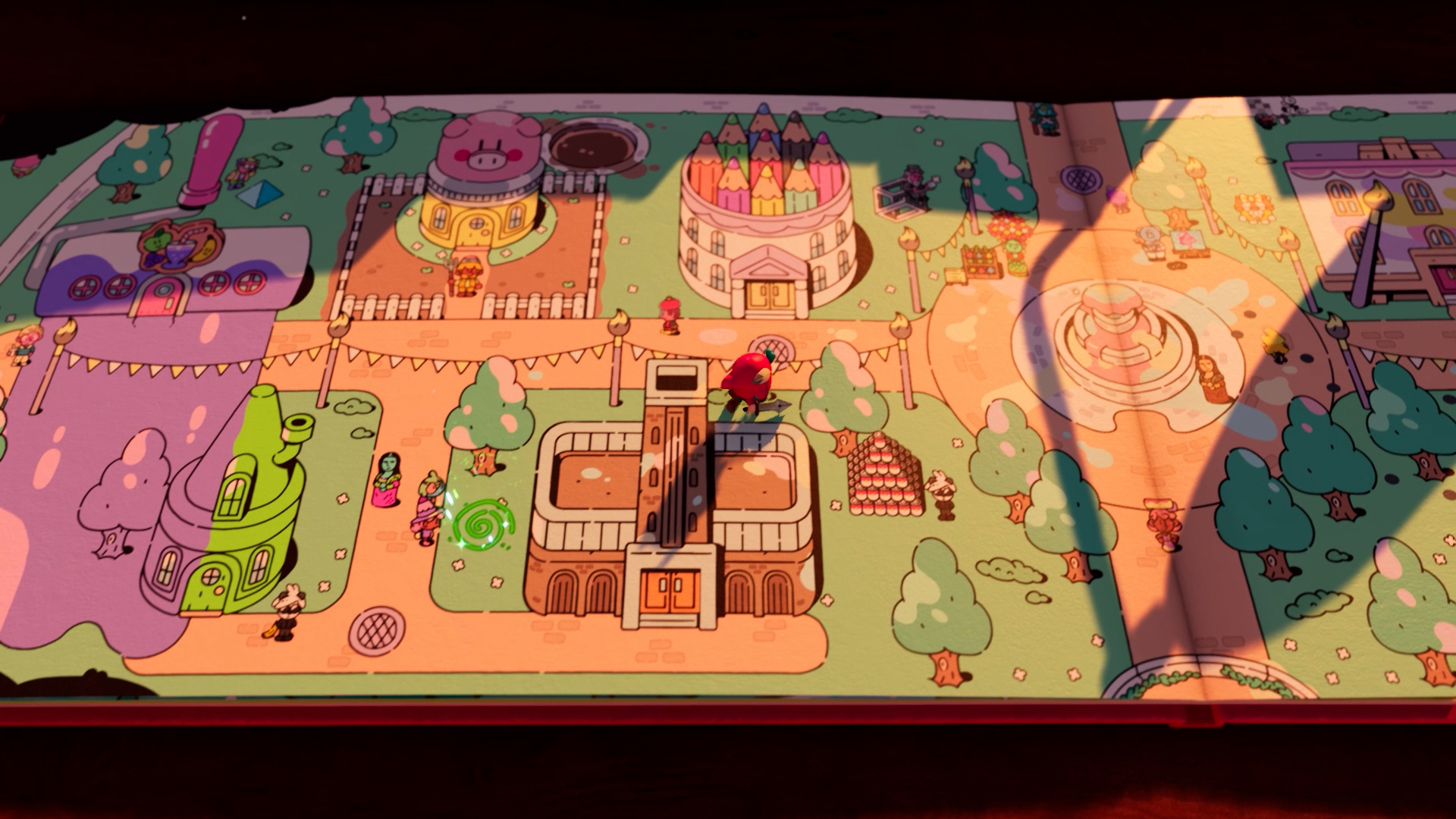
Jot will have to leave his book both to solve puzzles in the storybook and to explore levels on Sam’s desk, the ten-year-old owner of The Plucky Squire. These 3D sequences translate Jot’s design to the ‘real world’ very well, and reminded me a bit of playing 1999’s Toy Story 2: Buzz Lightyear to the Rescue in that you’re playing a childhood figure brought to life.
Sam’s desk is as messy as would be expected from a child, and the messiness gives it and Sam personality, even though they never make an appearance. It’s littered with rulers, paint bottles, pencils, and other art supplies, indicating Sam is an artist themself and showing how our favorites books and stories can inspire us all to be creators of our own.
Navigating those levels will sometimes have Jot enter a 2D space as well. Sam has left sticky notes of their own adventurous drawings littered about, allowing Jot to switch between 2D and 3D to traverse the desk. It’s all very inventive and a blast to play. The 2D and 3D gameplay sections blend together nicely and keep things from getting too monotonous. Sam’s desk is always arranged differently, and sometimes the 3D desk levels will have specific themes, making sure you’re never bored.
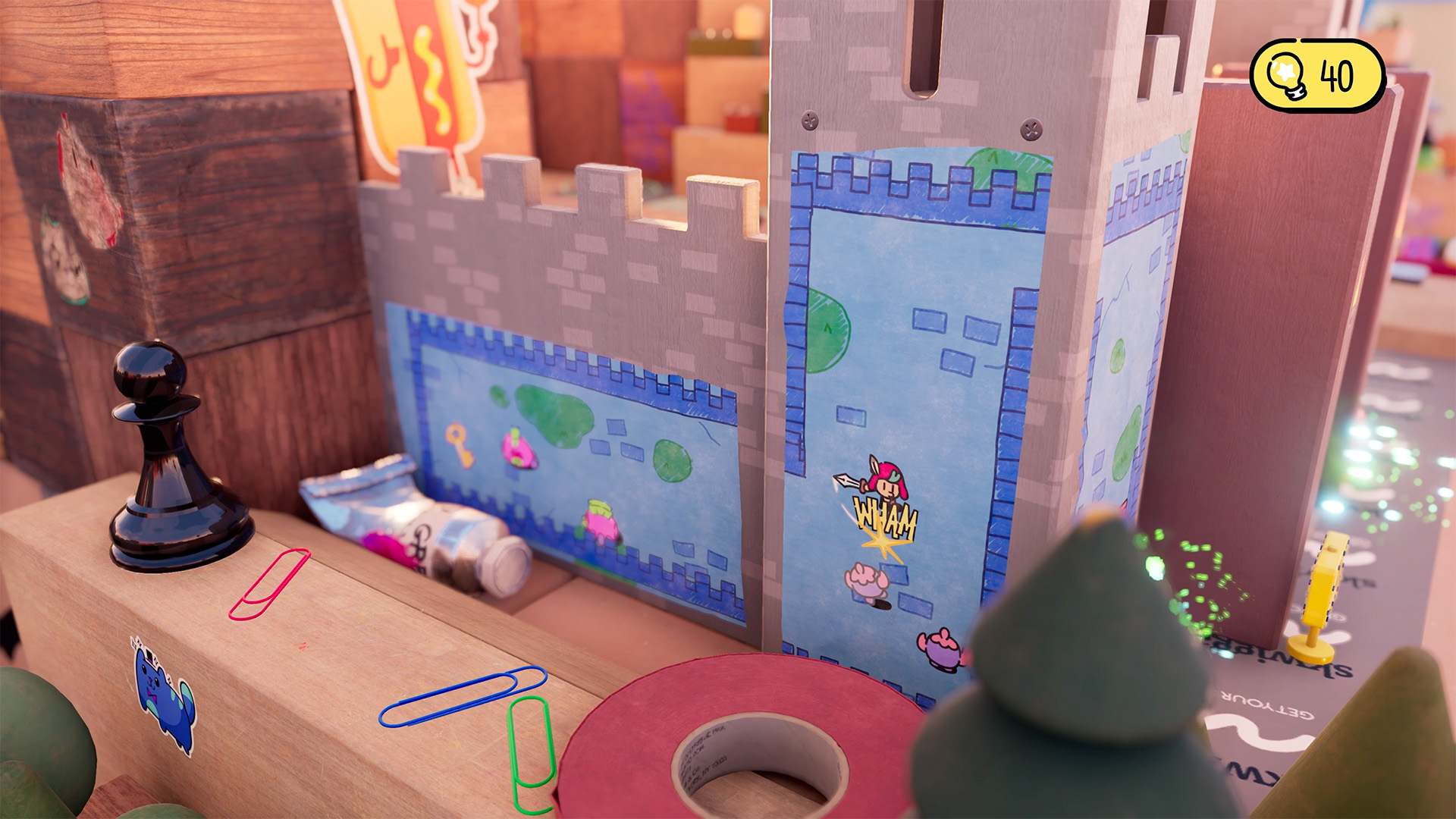
The Plucky Squire’s main gameplay is its combat. It doesn’t do anything new or noteworthy; Jot has a basic sword attack, a spin move, and jump attack at his disposal along with a sword throw. It’s very standard, but still fun, like a Game Boy Advance game of yesteryear. The combat translates very nicely to the 3D world and doesn’t require any new controls to be learned. Goblins and some of Humgrump’s forces have also made the jump to 3D, giving Jot enemies to fight during levels on Sam’s desk.
My favorite moments were environmental puzzles that required Jot to leap out of and back into the spread pages to grab a key or navigate around obstacles in the book world. Jot acquires the ability to tilt the book and to stamp objects in place, which opens up ways to navigate puzzle solutions while leaping outside of the book’s pages. As The Plucky Squire emulates a children’s picture book, its puzzles aren’t too difficult and easy to grasp. I especially enjoyed those that requiring rearranging sentences in the book to affect the environment, unlocking routes through its levels.
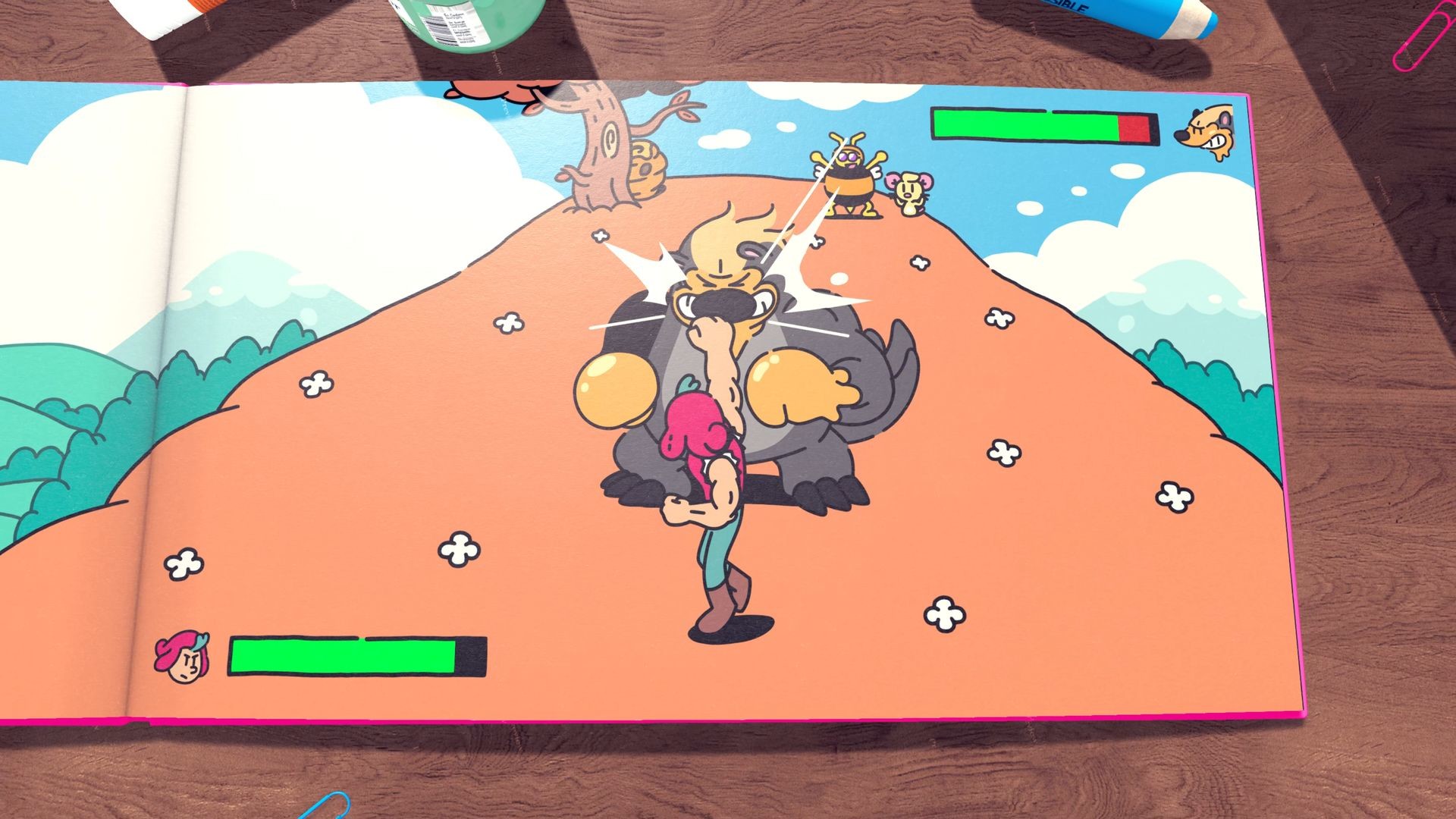
While the game was undoubtedly fun, there were a few gameplay hiccups in The Plucky Squire. The abundance of minigames missed more than they hit. Some were fun, while most were tedious, like smashing pots out of the air as Thrash. Thankfully there is an option to skip each minigame, almost like the developers knew they weren’t engaging enough. The Plucky Squire could have done without the stealth sections in the 3D world as well. You’ll automatically fail on being spotted, creating frustrating sections to the game that otherwise is a very smooth and joyous ride.
With only some minor missteps, The Plucky Squire excels and has certainly supplanted itself as one of the best indie games of the year so far. There is always something delightful to do or experience on each level of the roughly 10-hour game, from its simple but effective gameplay to its charming story. This is one you won’t want to miss.
- Delightful picture book art style
- Simple but fun combat and puzzles
- Seamlessly blends its 2D and 3D worlds
- Minigames didn't add anything to the experience









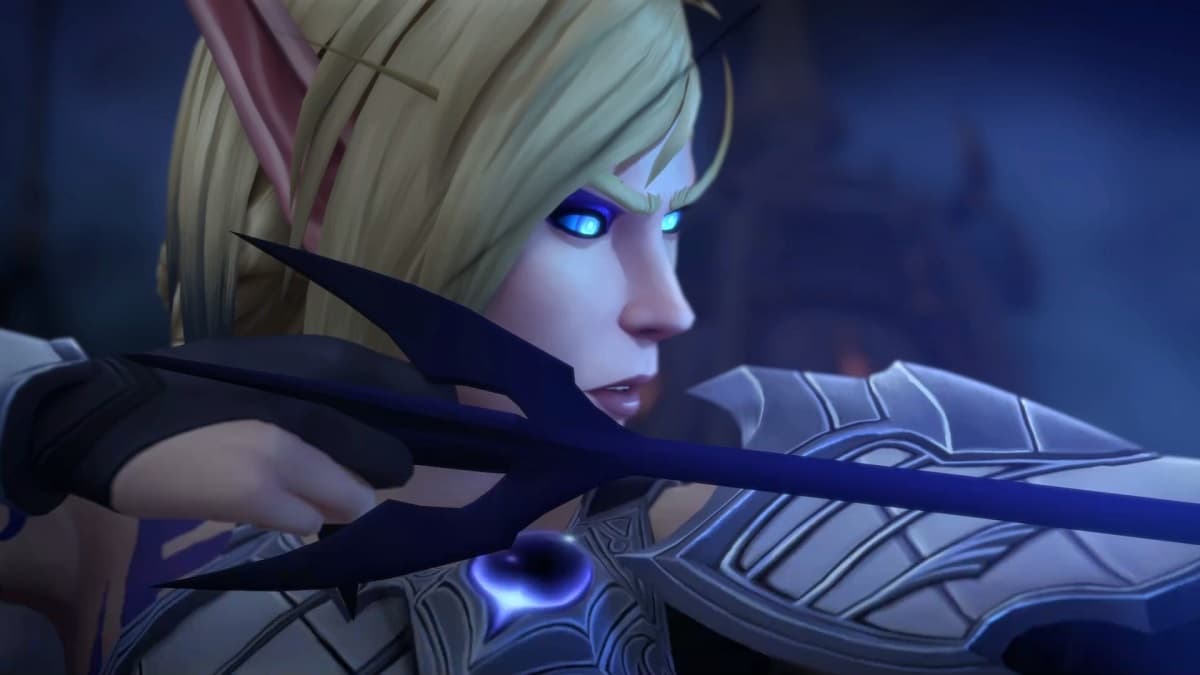
Published: Sep 17, 2024 12:00 pm